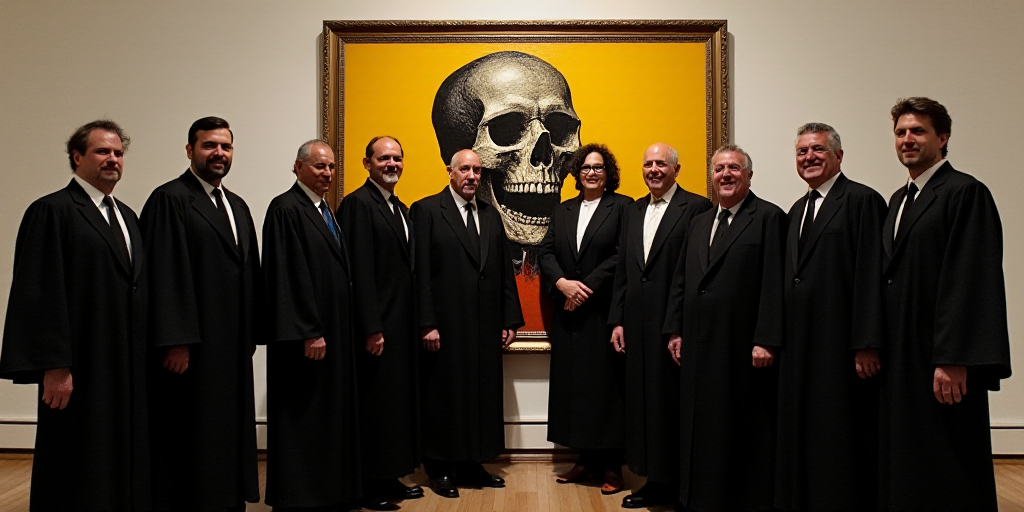Mexico experienced a historic moment on September 1, 2025, with the inauguration of the first Supreme Court of Justice of the Nation (SCJN) elected by popular vote, an unprecedented event that marks a new era characterized by symbolism, political questioning, and the challenge of regaining public trust in a judicial system marked by corruption and impunity.
A Ceremony with Symbolic Weight
The day began with an indigenous ritual in the capital’s Zócalo. Amidst dances, copal smoke, and speeches in native languages, community leaders handed the new justices the “staff of command”, a symbol of legitimate power and connection to indigenous peoples. Justice Hugo Aguilar Ortiz, a Mixtec jurist from Oaxaca, thus became the second indigenous person to head the highest court after Benito Juárez in the 19th century.
Later, the nine court members attended the Senate to take their oath before legislators in a ceremony marked by political tensions: the PRI was absent, and the PAN bloc left the chamber in protest of the new judicial model.
That evening, Aguilar symbolically opened the court’s doors on Pino Suárez Street, declaring that the tribunal would be “completely open” to the citizenry.
Who Comprises the New Court?
The SCJN is now composed of nine justices and justices, instead of eleven. Among them are profiles already holding seats in the court who opted to submit to election, such as Lenia Batres, Yasmín Esquivel, and Loretta Ortiz, who can extend their tenure between 15 and 17 years thanks to the special rule in the judicial reform.
Alongside them are recent election winners like Sara Herrerías, María Estela Ríos, Giovanni Figueroa, Irving Espinosa, and Arístides Guerrero, in addition to Aguilar, who will lead the court as the most voted candidate. The duration of their terms varies between 8 and 17 years, ensuring the court’s long-term continuity.
Judicial Power at the Center of Debate
The new court’s debut occurs amidst strong criticisms. On one hand, participation in the elections barely reached 13% of the electoral roll, raising doubts about the process’s legitimacy. Moreover, opponents and civil organizations have denounced irregularities, misuse of official resources, and links between some elected judges and organized crime.
On the other hand, the ruling party Morena and its allies defended the election as a necessary step to “clean” the judicial power, which they accuse of being controlled by economic and political interests.
New Functioning Features
The new court not only reduces in number but also changes its operating methods:
- Itinerant sessions: The court can hold hearings in various regions of the country, especially in indigenous and afro-Mexican communities, in coordination with local authorities.
- Priority to criminal and penal matters: Ministers agreed to give preferential treatment to these topics, which account for the majority of backlogs.
- Automated system: A technological model will be implemented to provide traceability to cases, aiming to prevent discretion in the allocation of files.
- More agile debate: The new regulations establish specific times for presenting projects and discussion rounds.
Between Hope and Distrust
The start of this Supreme Court moves between two narratives. On one hand, the official discourse presenting the reform as the beginning of an era of “law and justice for all”, and on the other, critical voices warning about the risk of politicization and capture of the judicial power by the government.
The truth is that Mexico is transitioning to an unprecedented model worldwide, a court elected by popular vote that must demonstrate whether this mechanism strengthens judicial independence or exposes it even more to political and criminal pressures.
Key Questions and Answers
- What is the new SCJN’s composition? The court now consists of nine justices and justices, including some who previously held seats and opted for election, as well as recent election winners. Their terms range from 8 to 17 years.
- What are the main criticisms against the new SCJN? Critics question the election’s legitimacy due to low voter turnout and allege irregularities, misuse of official resources, and links between some elected judges and organized crime.
- What are the new features of the SCJN’s functioning? The court will hold itinerant sessions in various regions, prioritize criminal and penal matters, implement an automated system for case traceability, and establish more agile debate times.






